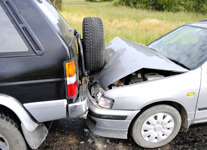Getting your car appraised by Auto Appraisal Network to determine you Diminished Value claim amount is only the first step in being compensated for your loss.
The effort we put into our reports is designed to stand up to the whole process and demonstrate to the at fault party, the you are prepared to take it as far as needed to be compensated. We compete with lots of other appraisers that can also determine the Diminished Value of your vehicle, but how far will that get you in getting compensated?
Upon submission of your Diminished Value Claim with the at fault party Insurance claim, they will first determine how compelling your case is and if taken to court are the basic elements provided that would have a judge award a judgment against the at fault party? Those 2 basic elements are liability and damages that can not only be measured but also verified.
By the time you are filing a Diminished Value claim your car should have already been repaired and liability determined. With liability established, what are the damages and how were they derived? Most of the appraisal companies we compete with will generate a simple appraisal value based on 1 of 3 methods, sliding scale applied to the fair market value of the car, Rule of thumb derived from interviewing a couple local dealers of that brand and or the most impressive, Rule 17c.
The Sliding Scale Method is a good estimating tool, but will not hold up in court, the basis of the sliding scale is too general and not verifiable, it is useful for opening a claim, but because it’s basis is weak you can only expect to be offered a portion of your claim because the insurance company already knows your chance to prevail in court is minimal.
The Rule of Thumb is quickly defeated, for every expert or dealer with the opinion of the loss; there is another with paid expert with a differing opinion, leaving the damage amount in question. Again, it’s useful for opening a claim, but not being compensated for your actual loss.
Rule 17c looks impressive, although the outcome does not match what your loss actually is, how could that be? Rule 17c was created by the insurance industry and when applied you will immediately notice a factor used that has no basis and limits the formula from value exceeding 10%. Curious that when you tried to trade you car in they took nearly 25% off for the previous accident, so how can my loss not exceed 10%? We’ll Rule 17c has roughly 6 reasons in total that have proven it not to be accurate, so much so it’s not admissible in court. Knowing this claims supported by this method are preferred by Insurance companies as it closely reflects, their value and limits their liability. But it’s not the amount of loss you realize when you try and sell your car.
In short, Diminished Value is the difference between what it was worth prior to the accident and what it was worth after the repairs were completed. If your car was worth $22,000 prior to loss and it’s now worth $14,800, you lost $7,200 (32%) and that loss is the liability of the person who caused the accident and is most likely covered under the property damage coverage of their insurance coverage.
Don’t settle for less than what you actually lost! Confronted by a Diminished Value claim, Insurance companies will try their best to limit their liabilities by making the process difficult, denying the claim, telling you the car was properly repaired, and there is no loss of value. There are a whole bunch of different replies you may receive when you submit your claim. If you submit a claim and it uses one of the aforementioned methods to determine the amount of diminished value, be prepared to settle for less. A stronger method will always result in a better claim.


 To request an appraisal, please complete the sections below:
To request an appraisal, please complete the sections below: